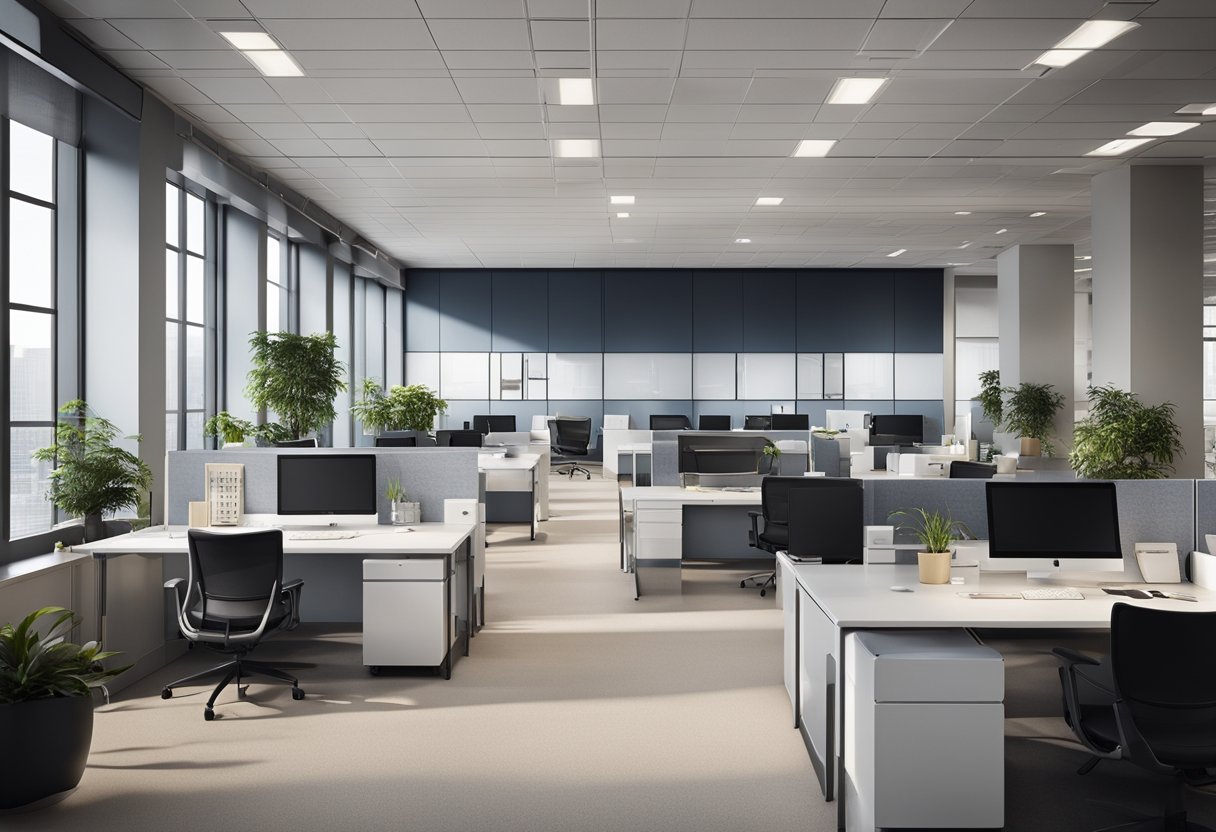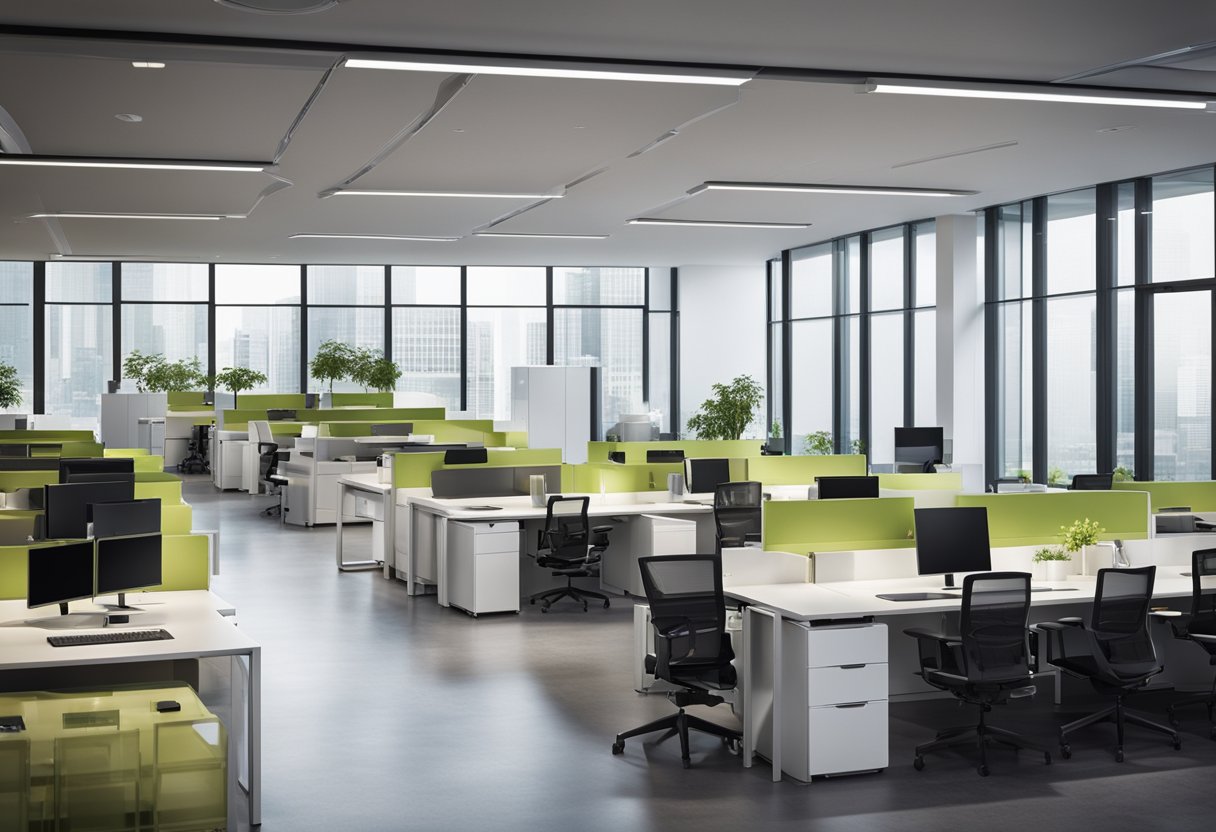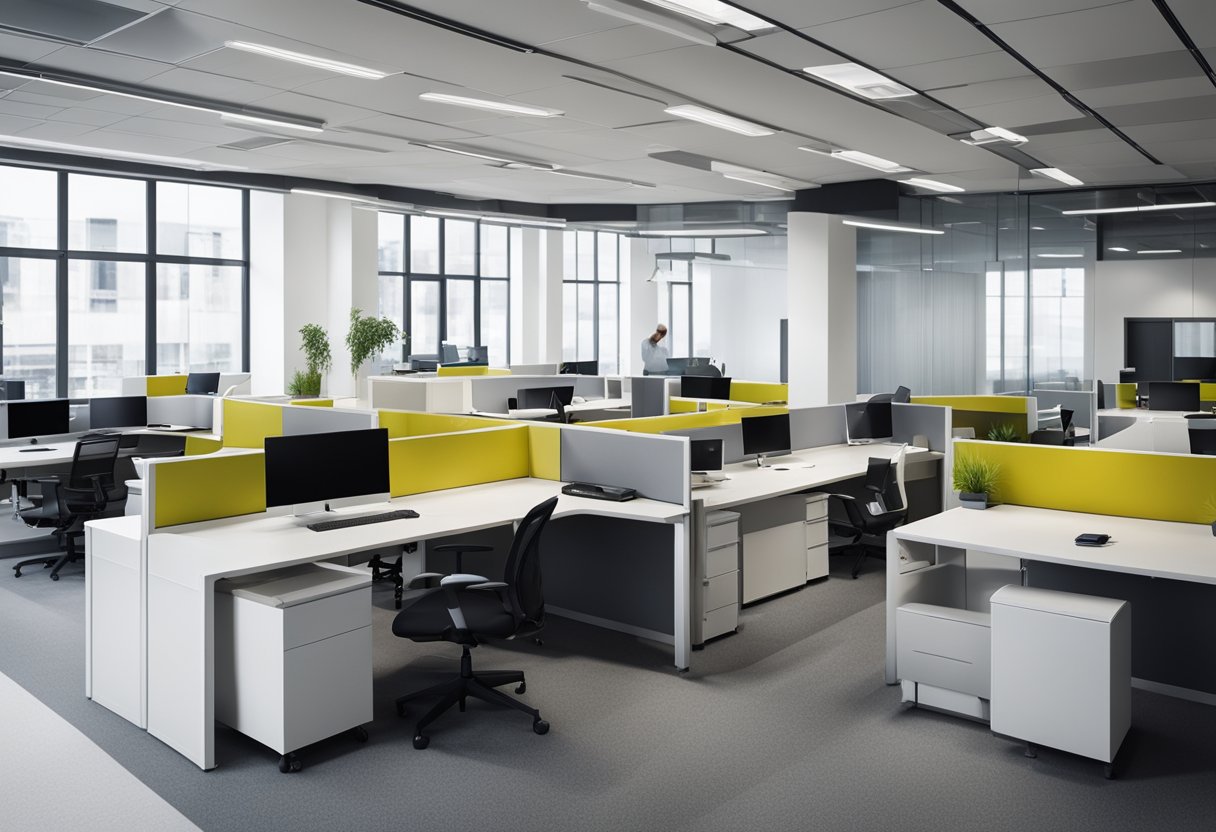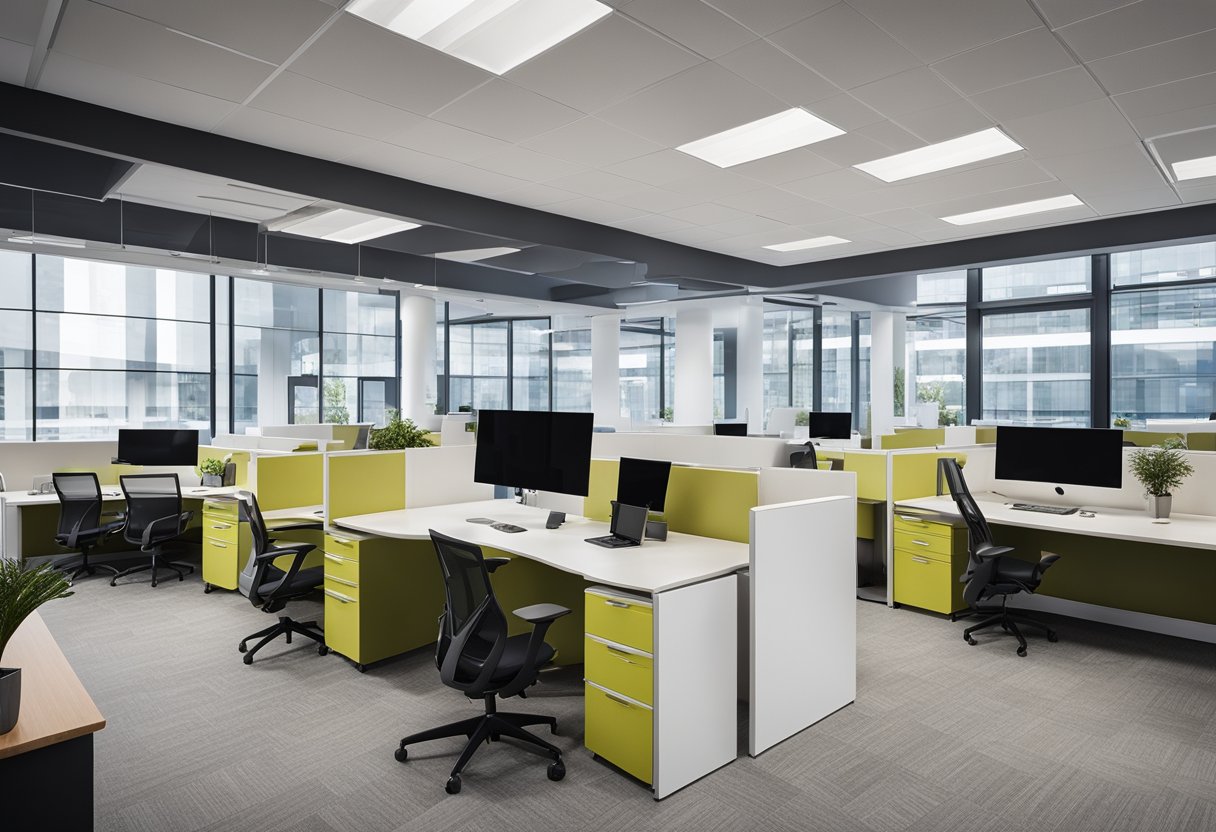Modular Office Design: The Future of Workplace Flexibility
Modular office design is a flexible and innovative approach to office space planning that has been gaining popularity in recent years. The concept of modular design is based on the idea of creating a workspace that is adaptable and can be easily reconfigured to meet changing needs. This approach favours using modular components over traditional construction methods, which allows for greater flexibility and multifunctional use.

Modular offices are designed to be easily assembled and disassembled to create a customised workspace that meets the specific needs of your business. This approach to office design allows you to create a space that is tailored to your unique requirements, while also providing the flexibility to easily adapt to changes in your business needs. By using modular design elements, you can create a workspace that is both functional and aesthetically pleasing, while also maximising the use of your available space.
Key Takeaways
- Modular office design is a flexible and innovative approach to office space planning that allows for greater flexibility and multifunctional use.
- By using modular design elements, you can create a customised workspace that meets the specific needs of your business, while also providing the flexibility to easily adapt to changes in your business needs.
- Modular offices are designed to be easily assembled and disassembled, which allows you to maximise the use of your available space and create a workspace that is both functional and aesthetically pleasing.
Fundamentals of Modular Office Design

Modular office design is an innovative approach to creating workspaces that are flexible, adaptable, and efficient. This design philosophy is based on the concept of modularity, which involves the use of interchangeable components that can be easily assembled, disassembled, and reconfigured to meet the changing needs of the workplace.
Understanding Modular Design
Modular design is a method of designing products, systems, or spaces that consist of independent, self-contained units, or modules. These modules can be combined in various configurations to create a variety of products, systems, or spaces. In the case of modular office design, the modules are furniture, partitions, and other components that can be easily assembled and reconfigured to create a variety of work environments.
Benefits of Modularity in the Workplace
Modular office design offers a range of benefits for both employees and employers. For employees, modular offices provide a work environment that is adaptable to their changing needs. They can easily reconfigure their workspace to suit their individual work styles, whether they require privacy for focused work or collaboration for group projects.
For employers, modular offices offer a range of benefits, including increased productivity, improved collaboration, and reduced costs. Modular offices are more adaptable than traditional offices, which means that they can be easily reconfigured to accommodate changes in the workforce or the work environment. This adaptability can help to improve productivity by providing employees with a work environment that is tailored to their needs.
Key Components of Modular Offices
Modular offices are composed of a variety of components, including furniture, partitions, and other elements that can be easily assembled and reconfigured. Key components of modular offices include:
- Modular furniture: Modular furniture is designed to be easily assembled, disassembled, and reconfigured to create a variety of work environments. This type of furniture is typically lightweight and easy to move, which makes it ideal for creating flexible workspaces.
- Partitions: Partitions are used to create separate work areas within an open-plan office. Modular partitions are designed to be easily assembled and reconfigured, which means that they can be used to create a variety of work environments.
- Flexible lighting: Flexible lighting is an important component of modular office design. This type of lighting can be easily adjusted to suit the needs of individual workers, whether they require bright, focused light for detailed work or soft, ambient light for relaxation.
Modular office design is an exciting development in the world of workplace design. By creating adaptable workplaces that can be easily reconfigured to meet the changing needs of the workforce, modular offices offer a range of benefits for both employees and employers.
Implementing Modular Design Elements

Modular office design is all about flexibility and adaptability, and this is particularly important when it comes to incorporating modular design elements into your workspace. Here are some key considerations to keep in mind when implementing modular design elements in your office.
Incorporating Technology and Innovation
One of the key benefits of modular office design is the ability to incorporate the latest technology and innovation into your workspace. This can include everything from smart lighting and temperature control systems to advanced communication and collaboration tools.
By incorporating these technologies into your office, you can create a more efficient and productive workspace that is better suited to the needs of your team. This can help to promote communication, creativity and collaboration, while also making it easier to manage and organise your workflow.
Designing for Adaptability and Growth
Another key benefit of modular office design is the ability to design your workspace for adaptability and growth. This means that you can create a space that is flexible enough to accommodate changes in your business needs and growth over time.
By incorporating modular design elements such as movable walls, raised floors and cubicles, you can easily reconfigure your workspace to meet changing needs. This can help to reduce barriers to communication and collaboration, while also providing more amenities and transparency for your team.
Selecting Furniture and Accessories
Finally, when implementing modular design elements in your office, it is important to select the right furniture and accessories. This can include everything from seating and tables to partition walls and acoustics.
When selecting furniture and accessories for your workspace, it is important to consider both functionality and aesthetics. This means choosing pieces that are not only comfortable and functional, but also visually appealing and reflective of your brand and company culture.
By following these key considerations, you can create a modular workspace that is well-suited to the needs of your team, promotes communication and collaboration, and provides a flexible and adaptable environment for growth and innovation.
Frequently Asked Questions

How can you transform a tiny space into a dynamic modular office?
If you have a small office space, you can make the most of it by incorporating modular design solutions. Modular furniture, such as desks and storage units, can be customised to fit your space perfectly. You can also use modular partitions to create separate work areas and maximise privacy. Additionally, you can use colour and lighting to create a dynamic and inviting atmosphere.
What are the hottest trends in modern modular office interiors?
One of the hottest trends in modern modular office interiors is the use of natural materials, such as wood and stone. These materials can add warmth and texture to the space, creating a more inviting and comfortable work environment. Another trend is the use of bold colours and patterns, which can add energy and personality to the space. Finally, the use of technology, such as smart lighting and sound systems, can enhance the functionality and productivity of the workspace.
What are the advantages of choosing modular furniture for your workplace?
Modular furniture offers several advantages for the workplace. Firstly, it is highly customisable, allowing you to create a workspace that meets your specific needs. Secondly, it is easy to reconfigure and move around, making it ideal for businesses that need to adapt quickly to changing circumstances. Finally, modular furniture is often more affordable than traditional furniture, making it a cost-effective solution for businesses of all sizes.
How does modular design support workplace flexibility and efficiency?
Modular design supports workplace flexibility and efficiency by allowing you to create a workspace that can adapt to changing needs. For example, if you need to add more workstations or storage space, you can simply add more modular units. Additionally, modular design can help to reduce waste and increase sustainability, as you can reuse and repurpose modular units as your needs change.
What should you consider when planning the layout of a modular office?
When planning the layout of a modular office, it is important to consider factors such as the size and shape of the space, the number of employees, and the type of work that will be done in the space. You should also consider the flow of traffic through the space, and ensure that there is enough space for employees to move around comfortably. Finally, you should consider the acoustics of the space, and ensure that there is enough sound insulation to reduce noise levels.
How can modular design solutions be customised for different professional needs?
Modular design solutions can be customised for different professional needs by incorporating specific features and functions into the design. For example, if you work in a creative field, you may want to include modular units that can be used for brainstorming and collaboration. If you work in a more traditional office setting, you may want to focus on creating a space that is quiet and conducive to focused work. By customising your modular design solutions to meet your specific needs, you can create a workspace that is both functional and inspiring.



